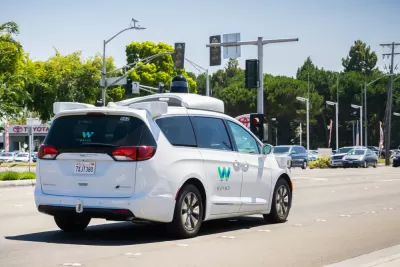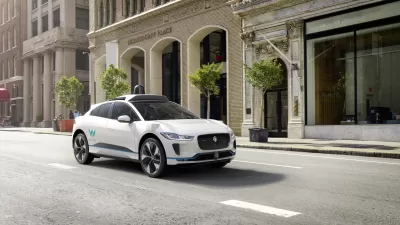There are a lot of players in the autonomous vehicle game. It can be hard to keep track of which company is fighting for which share of the market, and which companies are out in front in the race to dominate the emerging industry.

"In the race to start the world’s first driving business without human drivers, everyone is chasing Alphabet Inc.’s Waymo."
That's the provocative opening pronouncement in a big, feature-length article by David Welch and Elisabeth Behrmann.
"The Google sibling has cleared the way to beat its nearest rivals, General Motors Co. and a couple of other players, by at least a year to introduce driverless cars to the public," add Welch and Behrmann.
Still, the article acknowledges that "[t]he road to autonomy is long and exceedingly complicated," and there will be a plenty of surprising developments along the way. Experts quoted in the article, like Brian Collie, head of Boston Consulting Group’s U.S. automotive practice, expect there to be only a few winners when the competition is over. To the victors go the spoils: "Goldman Sachs Group Inc. predicts that robo-taxis will help the ride-hailing and -sharing business grow from $5 billion in revenue today to $285 billion by 2030," write Welch and Behrmann.
After introducing the playing field, and leading theories about how and when autonomous vehicles will take over the roads, the article breaks down a survey of the emerging industry into categories: 1) The clear Leaders, 2) Staying Close, 3) Following the Pack, and 4) Unusual Cases and Dark Horses.
FULL STORY: Who’s Winning the Self-Driving Car Race?

Montreal Mall to Become 6,000 Housing Units
Place Versailles will be transformed into a mixed-use complex over the next 25 years.

Planetizen Federal Action Tracker
A weekly monitor of how Trump’s orders and actions are impacting planners and planning in America.

DARTSpace Platform Streamlines Dallas TOD Application Process
The Dallas transit agency hopes a shorter permitting timeline will boost transit-oriented development around rail stations.

Study: 4% of Truckers Lack a Valid Commercial License
Over 56% of inspected trucks had other violations.

Chicago Judge Orders Thousands of Accessible Ped Signals
Only 3% of the city's crossing signals are currently accessible to blind pedestrians.

Philadelphia Swaps Car Lanes for Bikeways in Unanimous Vote
The project will transform one of the handful of streets responsible for 80% of the city’s major crashes.
Urban Design for Planners 1: Software Tools
This six-course series explores essential urban design concepts using open source software and equips planners with the tools they need to participate fully in the urban design process.
Planning for Universal Design
Learn the tools for implementing Universal Design in planning regulations.
City of Mt Shasta
City of Camden Redevelopment Agency
City of Astoria
Transportation Research & Education Center (TREC) at Portland State University
US High Speed Rail Association
City of Camden Redevelopment Agency
Municipality of Princeton (NJ)





























